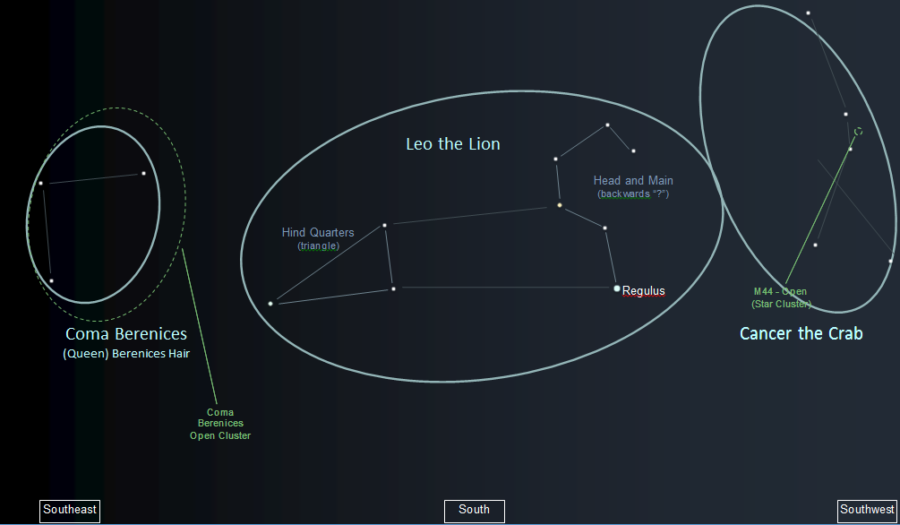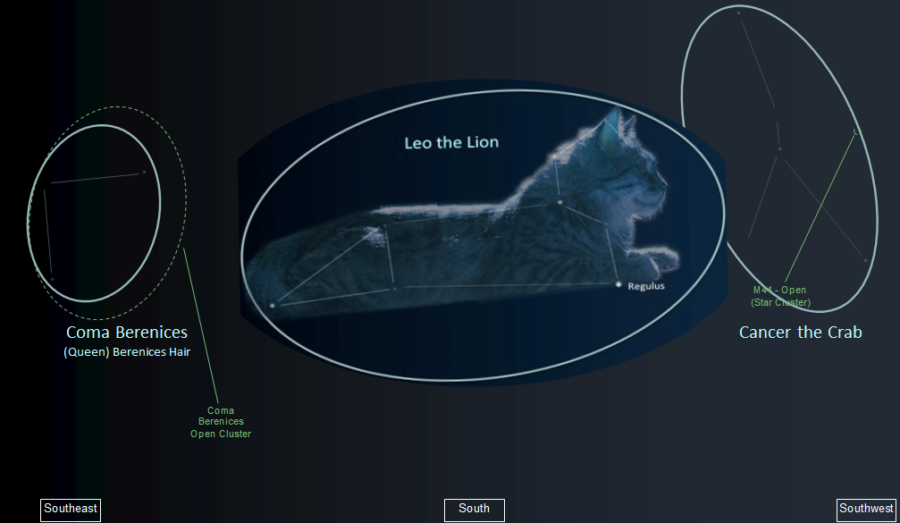For thousands of years, humans have looked up at the stars. The stars helped them try to understand their purpose, and the role they play in our lives.
To help memorize the different stars, patterns of connect-the-dot figures were created by many different cultures. Today, we recognize 88 official patterns or “constellations” of stars.
In last month’s blog, we discussed Gemini the Twins, as well as two other prominent constellations seen in the winter.
This month’s post will focus on three constellations that mark the transition from winter to spring: Leo the Lion, Cancer the Crab, and Coma Berenices.
Leo the Lion

High in the south at this time of the year, we find Leo the Lion.
To find Leo, look for a backwards question mark, and on its left a triangle with the long part facing east. Leo’s head and mane are formed by that question mark and his body reaches towards the triangle.
Can’t quite see it? Check out the image below to see a cat superimposed over the stars of Leo.

Regulus, the brightest star in Leo, is a multiple star system, of which two can be seen in a telescope. Regulus means “little king,” and is one of the four royal stars of ancient times. The others are Antares (summer), Aldebaran (winter), and Formalhaut (fall).
Cancer the Crab
To the west of Leo is Cancer the Crab. A few inconspicuous stars form the body of the crab. Within Cancer, one can find an open cluster known as M44 — the Beehive Cluster.
As described in last month’s edition, an open cluster is a loose grouping of stars that have all formed together from a giant gas cloud. While the cloud may have dissipated, the leftover stars can still be seen. Open clusters can be spotted in park skies with binoculars, and look fabulous in a telescope.
Coma Berenices (Queen Berenices Hair)
To the left (east) of Leo is the constellation of Coma Berenices, named after Queen Berenices II (Queen of Egypt during the Ptolemaic Dynasty). It is the only constellation that is named after a historical figure.
This constellation, is made up of many loose stars that represent the hair she cut off and sacrificed as a votive offering. Interestingly, her hair is actually an open star cluster in its own right, but was not recognized because of its large size.
To learn more about March’s astronomy, visit our Eyes on the Skies post.
